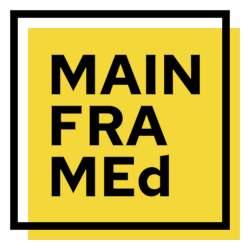SNA Fundamentals
Code: SNAFDescription
This course introduces students to the concepts, terminology, and operation of an SNA network. Emphasis is placed upon, but is not limited to, VTAM and NCP implementations of SNA. Both traditional subarea SNA, APPN, and APPC are explained in detail. This course is an essential requirement for all personnel working in or with an SNA network.
Audience
This course will benefit all personnel within Operations, System Programming, and Networking departments. Programmers, analysts, network designers, and managers will also benefit.
Prerequisites
No previous SNA knowledge or experience is required although some familiarity with basic networking would be an advantage.
Objectives
Upon successful completion of this course, the student will be able to:
- Develop an extensive SNA vocabulary.
- Identify the major SNA components and their role within the architecture.
- Identify and use the various address structures used in SNA.
- Describe the purpose and data flow characteristics of each session type.
- Understand how chaining, bracketing, and pacing operate.
- Identify the major SNA commands and command flows eges.
- Perform both cold and online backups and fully recover a damaged database.
Topics
Introduction
What is SNA?
Pre-SNA Networking.
SNA Hardware and Software.
Nodes and Datalinks.
SNA Layers.
Bibliography.
Network Accessible Units
SNA NAUs.
SSCP Functions.
CMC and data Hosts.
PU Types and function.
LU functions.
NAU data flow.
Address awareness.
Network addresses.
Sample network addresses.
Network addresses message format.
Local address message format.
SNA Sessions
Sessions and half-sessions.
Half session layers.
Session types.
Session setup flows.
Initiation sequences.
Logon request processing.
LU-LU session types.
SNA Message Structures
Message terminology.
SNA message format and flow.
RU categories.
BIU structures.
Request header format.
Response header format.
Transmission header formats.
Additional TH fields.
FID conversion.
Path Control
The NAU layers.
Session profiles.
Session level pacing.
Session level pacing example.
Adaptive session level pacing.
Request chaining.
Bracketing.
Send/Receive modes.
Function management headers.
BIND command format.
SNA Network Interconnections
SNA addressing limitations.
SNI concepts.
Gateway NCP functions.
Address translation.
Gateway SSCP functions.
Alias name translation.
Cross network logon sequence.
Advanced Program to Program Communication
Systems Application Architecture.
APPC and SAA.
LU6.2 sessions.
Conversations and sessions.
Required information for a conversation.
Mapped and basic conversations.
APPC verbs.
Verb examples.
Generalized data stream.
GDS variables.
Typical APPC example.
Advanced Peer to Peer Networking
Subarea SNA limitations.
APPN differences.
Distributed database.
Route calculation.
APPN routing.
APPN message format.
High performance routing.
HPR principles.
HPR path switching.
HPR message format.
Data Link Control (Optional Topic, Taught Only on Request)
DLC functions.
SDLC structure.
SDLC frame format.
SDLC addressing.
SDLC control field formats.
SNA in SDLC frames.
Token Ring structure.
Logical Link Control.
Token Ring frame format.
Token Ring addressing.
Token Ring control.
SNA in Token Ring frames.
X.25 structure.
X.25 packet format.
X.25 addressing.
X.25 packet control (QLLC).
SNA in X.25 packets.
Frame Relay structure.
Frame Relay frame format.
Frame Relay addressing.
Frame Relay control (RFC1490).
SNA in Frame Relay frames.
ATM structure.
ATM cell format.
ATM addressing.
ATM control (RFC1483).
ATM Adaption Layer.
SNA in ATM cells.
Price (ex. VAT)
Duration
Delivery methods
- Classroom
- On-site (at your location)
- Virtual (instructor online)
